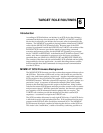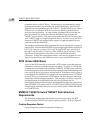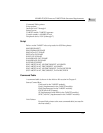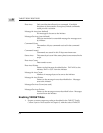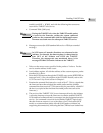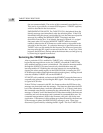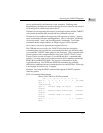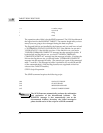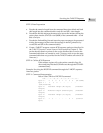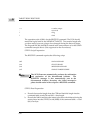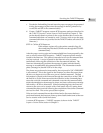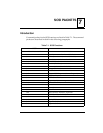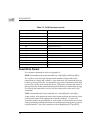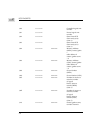
Servicing the TARGET Requests
6-9
6
STEP 3: Data Preparation
a. Decode the transfer length from the command descriptor block and load
this length into the command table words $16 and $18 -- data length.
b. Decode the link bit and store the status to be sent to the initiator during the
status phase into the STATUS word (MSB) of the command table -- word
$64, even byte.
c. Decode the link and flag bits and store the proper message to be presented
during the message-in phase into the message-in buffer (pointed to by
words $20 and $22 of the command table).
d. Create a TARGET sequence custom SCSI sequence packet as described in
the TARGET Sequence Custom Sequence Packet section in Chapter 2. This
packet should contain a pointer to the script described above and to the
command table that was created or used. (You may wish to use the same
command table that was provided for the TARGET enable call to the SCSI
firmware.)
STEP 4: Call the SCSI Firmware
Point address register A2 to the packet created in Step 3d.
above and jump into the SCSI firmware through the FUNNEL
command entry.
Example: Servicing the RECEIVE command through the TARGET sequence
firmware packet.
STEP 1: Command Interpretation
Below is the CDB for a RECEIVE command.
bit.....7...6...5...4...3...2...1...0...
byte 0 : 0 0 0 0 1 0 0 0 (OP CODE)
byte 1 : l u n - - - - -
(LUN|reserved)
byte 2 : Transfer length (M S byte) (Transfer
length)
byte 3 : Transfer length (middle byte) (Transfer
length)
byte 4 : Transfer length (L S byte) (Transfer
length)
byte 5 : v u - - - - f l (control
byte)



